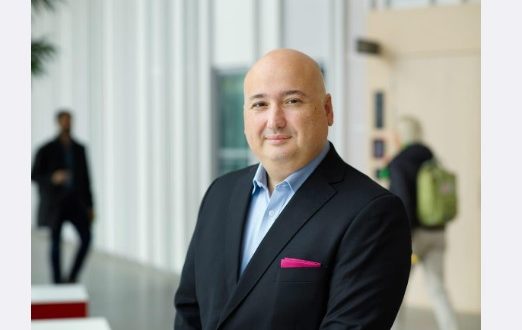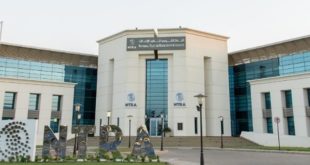– 5G is expected to reach 80 million subscriptions in the Middle East and North Africa
(MENA) region by 2025, representing 10% of total mobile subscriptions. These forecasts
are included in the June 2020 edition of the Ericsson Mobility Report,
along with projections for data traffic growth, and regional subscriptions.
The spread of COVID-19 during the first part of 2020 has impacted all parts of society,
including the telecommunications sector.While 5G subscription growth in some markets
has slowed as a result of the pandemic, this is outweighed by other markets where it is
accelerating.Commercial 5G deployments launched in the region in 2019 and 5G
subscriptions have already surpassed 500,000, mainly in the Gulf countries.
Fadi Pharaon, President of Ericsson Middle East and Africa, says:“As consumers and
enterprises adopt new digital behaviors imposed by COVID-19 lockdowns, an increased
focus has emerged for mobile and fixed networks as central components of critical national infrastructure. The latest edition of Ericsson’s Mobility Report reiterates the importance of
new technologies such as 5G, not just in the evolution of communication but in terms of support for businesses and societies during remote work times.”
In the MENA region, around 23% of mobile subscriptions were for LTE at the end of 2019.
The MENA is anticipated to evolve over the forecast period, and by 2025, 77% of mobile
subscriptions are expected to be for mobile broadband. In fact, the region is expected to
have one of the highest growth rates in mobile data usage during the forecast period,
increasing total mobile data traffic by a factor of almost nine between 2019 and 2025. The
average data per smartphone is expected to reach 23GB per month in 2025.
Value of Digital Infrastructure
The report also takes an incisive look at the role of networks and digital infrastructure in
keeping societies running, and families connected during the COVID-19 pandemic.
The COVID-19 pandemic has had a substantial impact on people in many countries and
their daily lives, but consumers see resilient networks as a vital help in coping with everyday’s life. In a recent study conducted by Ericsson Consumer Lab, 83% of the
respondents from 11 countries statethat ICT has helped them to cope with the lockdown. The results show an increased adoption and usage of ICT services, such as e-learning and
wellness apps, that have helped consumers adapt to new realities, underpinned by connectivity.
There is a higher than average degree of feeling supported by ICT among career
millennials, parents with children at home and those living in centers of larger cities. Looking ahead, while 57% say they will save money for financial security, one-third plan to
invest in 5G and an improved broadband at home to be better prepared for a potential second wave of COVID-19.
Consumers’ Expectations of 5G Networks
In times of crisis, when connectivity is important for consumers to carry out work- and
leisure-related activities, expectations for better network experiences become higher. Six in 10 smartphone users have a clear positive attitude towards the role 5G could have
played during the crisis, and about half of them strongly agree that 5G could have offered both better network capacity and higher speeds compared to 4G. They also believe that
society overall could have benefited from 5G.
There was a similar level of agreement related to 5G’s role from a medical perspective. For
example, medical specialists could have used 5G to control medical equipment via remote centers or 5G-enabled robots could have carried out tests, reducing the time medical staff
need to spend in infectious spaces.
FWA takes an expanded role
FWA connections are forecast to reach nearly 160 million by end of 2025 – generating
about 25 percent of global mobile network data traffic. At the end of 2019, global FWA data traffic was estimated to have been around 15 percent of the global total. It is now
projected to grow nearly 8 fold to reach 53 exabytes in 2025, representing 25 percent of the global total mobile network data traffic.
FWA delivered over 4G or 5G is an increasingly cost-efficient alternative for providing
broadband and several factors are driving theFWA market: demand from consumers and businesses for digital services along with government-sponsored programs and subsidies.
The report also includes forecasts on data traffic growth, regional subscriptions plus
insights into cloud-based gaming as well as in-depth articles on private dedicated networks and Verizon’s millimeter wave strategy for targeted metropolitan areas
 التكنولوجيا وأخبارها بوابة مصر لأخبار تكنولوجيا المعلومات والإتصالات
التكنولوجيا وأخبارها بوابة مصر لأخبار تكنولوجيا المعلومات والإتصالات







